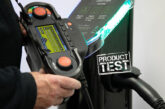
As a memorable year of new commercial vehicle launches drew to a close in 2015, it fell to Nissan to see if the best had indeed been saved till last!
Like a row of perfectly appointed sun loungers all laid out before us, Nissan had clearly got up at the crack of dawn to claim the best spot in the still warm Majorcan winter sunshine. No coincidence, perhaps, that it would be the bronzed and tanned versions of its latest incarnation of the Navara NP 300, which would ultimately determine for the assembled testers, whether the company has a vehicle to challenge the very best in the increasingly competitive pick-up market.
Ahead of us lay more than 300 miles of the best and most testing terrain, the largest of the Balearic Islands has to offer and, believe us, with mountain passes zig-zagging remorselessly at more than 1,500 metres and descending precariously into villages that time forgot, more associated with donkeys and carts, that is quite a lot.
Even with 80 years of pick-up experience, Nissan doesn’t go back quite that far, but it has achieved a number of significant firsts in the sector through clever design and robust manufacturing, racking up sales of 14 million units since 1935. However, it is doubtful whether any have been quite as notable as the introduction of a new coil spring five link rear suspension system that represents a technological sea change in the pick-up market, with all competitors currently employing a combination of rigid rear axle and leaf springs as seen on the previous generation Navara.
This new lightweight multilink system is widely recognised as providing a significantly superior ride quality – something we were able to judge for ourselves by driving both the old and new versions of the vehicle on the same challenging off road trial. This is particularly apparent when unladen and, importantly, doesn’t compromise on an impressive payload rating (in excess of one tonne), towing capacity (3,500kg) and all round durability. Offered in the Double Cab version (a King Cab option is available, but not expected to have much take up in the UK market), the new system is also 20kg lighter than the previous suspension, contributing to class leading fuel economy (up to 44.9mpg) and reduced CO2 emissions. The new design has also helped improve manoeuvrability. Thanks to a reduction in wheelbase of 50mm, the latest generation model has a turning circle of 12.4m – handy for tight sites and merchant yards.
The four wheel drive system is engaged and disengaged electronically via a rotary button located on the dashboard. For best economy and handling, drivers stay in 2wd mode on the road but can select 4Hi mode for off road conditions whilst driving at up to 100kmph. For really steep and slippery inclines, a 4lo setting provides even more torque at the wheels, whilst a mechanical diff lock is also available.
Also new to the Navara is an electronic limited slip differential. This advanced braking system uses sensors that constantly monitor wheel speed. If one wheel is detected as spinning faster than the other, braking pressure is briefly applied to slow the faster wheel. The end result is improved traction, cornering balance and a more secure feel. Other safety and convenience features include cruise control, hill descent control and hill assist as well as keyless entry, rear cameras and parking sensors.
The fully redesigned cab interior features a more sculptured dashboard that creates extra cabin space and a more open feel generally. Spinal support seats, inspired by NASA, offer improved ergonomics to reduce fatigue and provide greater driver alertness.
VERDICT – After a thoroughly enjoyable two days spent close up and personal with the new NP 300, it looks like Nissan have the pick-up market once again in the “Palma” of their hand!
The latest generation is being launched with the choice of two or four wheel drive and the option of a standard six-speed manual, or seven-speed automatic gear box. Available with two power outputs – 120 and 140w – in a first for the company in this sector, it is also introducing twin turbocharging technology and, as a direct result of gains in fuel economy, owners should benefit from significantly lower running costs. In fact, drivers are predicted to save up to £1,000 in fuel costs alone, when compared to the previous model over three years or 60,000km.
For small businesses, it is in the load area where the truck really earns its keep, however, and here the bed itself is home to some further innovations in the form of the brand’s acclaimed C channel sliding track load system. With heavy duty channels on the rear cabin bulkhead and bed sides, owners have flexibility when it comes to securing vulnerable loads. The double cab’s load bed is also 67mm longer at a sector topping 1,578mm. An integrated toolbox and bed divider offer practical space saving solutions.
Recognising the increasing trend amongst pick-up owners to personalise their vehicles, and the desire to combine both business and leisure activities, the company now offers in excess of one hundred accessories, including tow bars and bed liners, sliding trays and a new design of hard top. Prompting the company to describe the NP 300 as the Swiss army knife of its LCV range.
The latest Pickup features four trim grades with prices for the double cab versions starting at around £24,000 rising to £29,0000 for the top of the range Teka inclusive of VAT and all come with the reassurance of Nissan’s five-year/100,000 mile LCV warranty.








